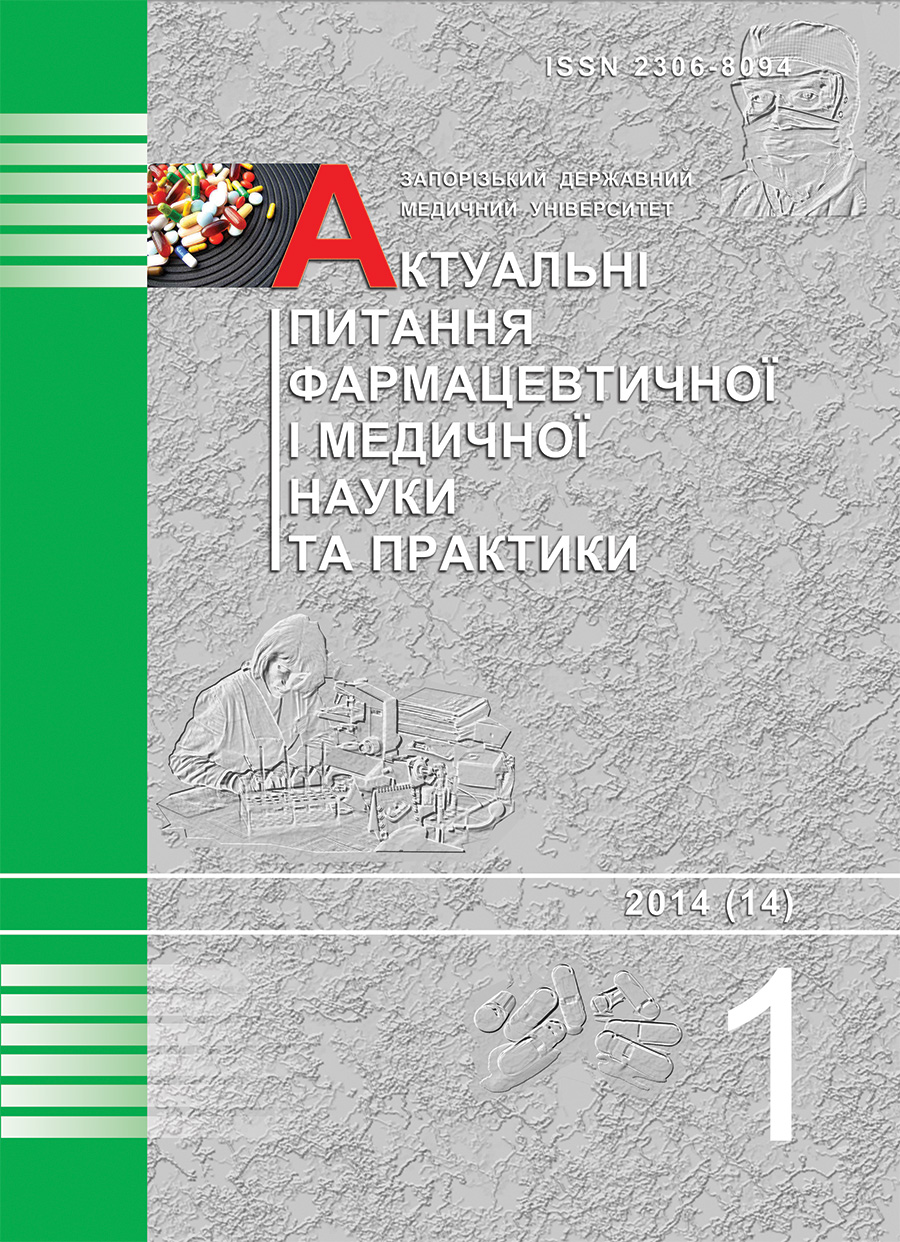THE DEVELOPMENT AND VALIDATION OF IDENTIFICATION METHODS OF LORATADINE TABLETS
DOI:
https://doi.org/10.14739/2409-2932.2014.1.24833Keywords:
identification, validation, spectrophotometry, TLH, loratadine, tabletsAbstract
Methods of identification of loratadine in tablets by absorption spectrophotometry, TLC and qualitative reaction (based on hydroxamic reaction) have been developed and validated.
The development of scientifically based standardized procedures for the validation of analytical methods for identification and quantitative tests of determination the active ingredients and other components in drugs is very important. The selected object of the study was loratadine (Claritin) – second generation antihistaminic drugs. According to the chemical structure loratadine is ethyl 4-(8-chloro-5,6-dihydro-11H-benzo[5,6]cyclohepta[1,2-b]pyridine-11-ylidene)-1-piperidine carboxylate.
The purpose of our work is the development and validation of methods for identification of loratadine in tablets.
When developing methods of identification of loratadine in tablets we used UV-spectrophotometry and TLC. We have studied the behavior of loratadine in the UV region of the spectrum in different solvents (ethanol, 0.1 mol/l solution of hydrochloric acid). Optical density of solutions was measured at 2 nm in the cell with a thickness of10 mm. The behavior of loratadine in the UV region of spectrum in different solvents shows that in all investigated solvents drugs have characteristic absorption bands in the wavelength range at 220-310 nm. Thus different maximum absorptions of loratadine has been observed in various solvents: ethanol – at 248 ± 2 nm, in 0.1 mol/l hydrochloric acid solution there are two absorptions maxima – at 248 ± 2 nm and 274 ± 2 nm. UV spectra of loratadine in all investigated solvents are characterized by the same absorption maximum at 248 ± 2 nm, this makes possible to use UV-spectrophotometry for identification of loratadine in tablets.
We have investigated various mobile phases (solvent system) in order to identify the optimal choice of loratadine in tablets by TLC. For the purpose of methods for loratadine identification in other solvent systems, we have investigated the sensitivity detection of loratadine in them. Therefore, to identify loratadine in tablets TLC method can be used. It was established that the most optimal values of the coefficient of mobility are observed when using mobile phase: chloroform-acetone, 8:2. The detection limit for loratadine in the solvent system is 1.0 mg, which is not inferior to other mobile phases. According to the SPU and Notes of guidance on validation of analytical procedures: text and methodology (CPMP/ICH/381/95) for "Identification" must be validated to determine such characteristics as specificity and suitability of chromatographic system. When checking the stability of solution in time we used chromatography method in order to prepare fresh loratadine test solution and sustained test solution of loratadine. The solutions are stable over time, new areas have been identified. So, explored validation characteristics, namely specificity and suitability of the chromatographic system, meet the eligibility criteria established by the SPU. Also the known qualitative reaction for hydroxamic group with hydroxylamine and iron (III) chloride has been investigated and can be used to identify loratadine in tablets.
Conclusions
1. We proposed and developed UV-spectrophotometry methods, TLC and hydroxamic reaction to identify loratadine in tablets.
2. Validation characteristics, namely specificity and suitability of the chromatographic system have been studied. It has been established that they meet the eligibility criteria required by SPU.
References
Проект Концепції розвитку системи контролю якості ЛЗ // Аптека. – 2010. – № 5(726).
Державна Фармакопея України / Державне підприємство «Науково-експертний фармакопейний центр». – 1-е вид. – Доповнення 2. – Х. : Державне підприємство «Науково-експертний фармакопейний центр», 2008. – 620 с.
Гризодуб А.И. Стандартные процедуры валидации методик контроля качества лекарственных средств / А.И. Гризодуб // Фармаком. – 2006. – № 1–2. – С. 35–44.
Руководство по валидации методик анализа лекарственных средств / [под. ред. Н.В. Юргеля, А.Л. Младенцева, А.В. Бурдейна, М.А. Гетьмана, А.А. Малина]. – Москва, 2007. – 57 с.
Поляк О.Б. Хіміко-токсикологічне дослідження лоратадину : дис. на здобуття наукового ступеня канд. фарм. наук / О.Б. Поляк. – Х., 2005. – 160 с.
Downloads
How to Cite
Issue
Section
License
Authors who publish with this journal agree to the following terms:
Authors retain copyright and grant the journal right of first publication with the work simultaneously licensed under a Creative Commons Attribution License that allows others to share the work with an acknowledgement of the work's authorship and initial publication in this journal. 
Authors are able to enter into separate, additional contractual arrangements for the non-exclusive distribution of the journal's published version of the work (e.g., post it to an institutional repository or publish it in a book), with an acknowledgement of its initial publication in this journal.
Authors are permitted and encouraged to post their work online (e.g., in institutional repositories or on their website) prior to and during the submission process, as it can lead to productive exchanges, as well as earlier and greater citation of published work (See The Effect of Open Access)

